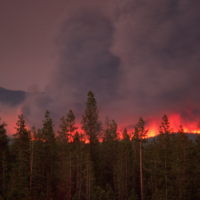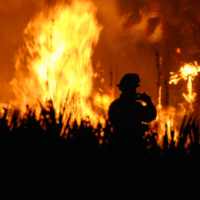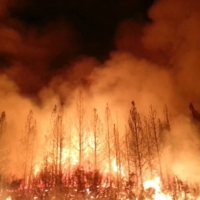While fuel is a key ingredient for any blaze, many large fires are primarily fueled by drought and wind, not trees or brush.
Climate change has intensified the effects of dry, windy summers. Under drought conditions, even young, thinned forests or clearcuts will burn, and burn intensely. In fact, studies have found that climate-change-induced hotter, drier weather in the West has doubled the amount of forest land hit by wildfires since 1984.





